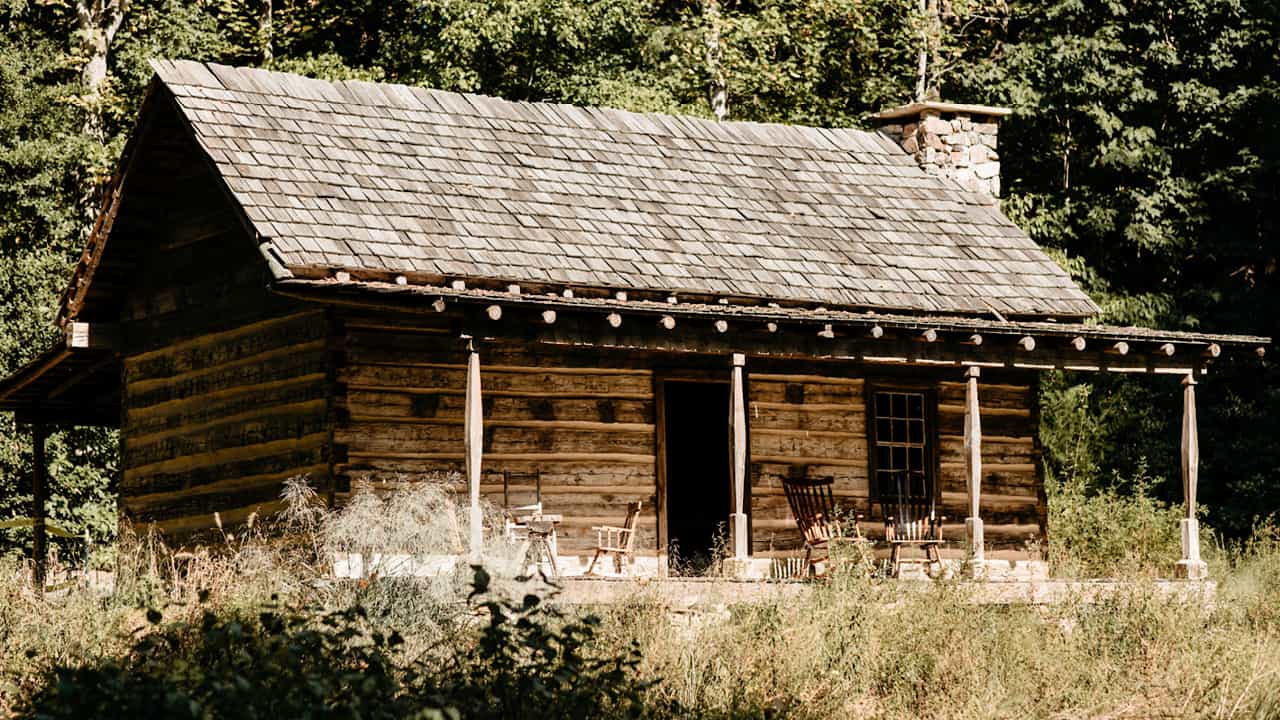Wood Family Cabin is noteworthy as an example of a log structure constructed during the time this area of North Georgia was the frontier.

Originally located about one mile to the south of the Chattahoochee River and approximately two miles from the site of the Creek Indian settlement of Standing Peachtree, Elias Wood purchased Land Lot 251 in District 17 (which included land as far east as the current Atlanta History Center campus) in 1847, but the cabin might date to decades before that. Starting in 1805, Georgia held eight land lotteries that parceled off Creek Indian lands to white settlers. The land on which the cabin once sat was ceded to the State of Georgia from the Creek Confederacy by the First Treaty of Indian Springs on January 8, 1821. The Land Lottery for this area, now known as District 17, took place later that same year.
At some point (estimated to be around 1872), Elias Wood and his wife Jane built a large Victorian-style home on the original property in which they included the cabin as the kitchen wing. Elias died in 1873. Jane continued to live there until her death in 1889.
Carl Hartrampf Jr. and his son Carl III located the cabin in 1996 concealed inside the Victorian home on Hollywood Road in Northwest Atlanta. Carl purchased the rights to remove the cabin from the house. The logs were disassembled and relocated to Winfield Farm at Scaly Mountain, North Carolina.
In 2014, the cabin was relocated from North Carolina to the Atlanta History Center’s campus. The cabin sits deep in the woods along Swan Woods Trail, again on former Creek Indian territory. A forest opening in the 10-acre, peaceful native woodland is the dramatic setting for the cabin.
The rich histories of the Creek, the early development of Atlanta’s Buckhead neighborhood, and the Wood family are interpreted as part of programming and special events.
Born in 1807 in South Carolina, Elias Wood, siblings and their mother, moved to Georgia, possibly in 1824. They first lived in the community known as Simsville, about two miles south of the site of the original Wood cabin.
It was there that Elias Wood first met and later married the daughter of Andrew and Mary (Gibson) Oliver, Martha Jane Oliver Sims, who was a widow with two children. Together, they were parents to nine more children. By 1840, Elias is listed in the census as living in Georgia Militia District 469 of DeKalb County along with eight family members and one slave.
Like many pioneer settlers in the area, Elias Wood farmed for his family needs. At his District 17 home, he grew wheat, Indian corn, and rye, as well as raised a few sheep and some pigs. He also kept bee hives that produced honey and wax.
During the Civil War, Sherman’s army came by Wood cabin on their march to take Atlanta. They confiscated all of the family’s food stores and animals, as is recorded in Southern Claims Commission documents.
The old logs cut for this cabin some 200 years ago have born witness to tremendous change –. settlement and trade, the Creek who were driven away, the coming of the railroads, the Civil War soldiers that passed this way, the growth of Buckhead, and more.
Landscape Highlights
- Wood Family Cabin is sited amid a preserved secondary-growth forest that sprang from cotton fields abandoned long ago.
- The log cabin surrounded by a meadow of grasses and wildflowers.
- Thriving honeybee hives are in the lower meadow surrounded by a trial American chestnut orchard.
Contact
Learn. More.
-
Buildings & Grounds
Wood Cabin is a noteworthy example of a log structure built when North Georgia was the frontier.
-
Buildings & Grounds
Explore highlights of Southeastern horticultural history by taking in 33 acres of enchanting gardens, woodlands, and trails.
-